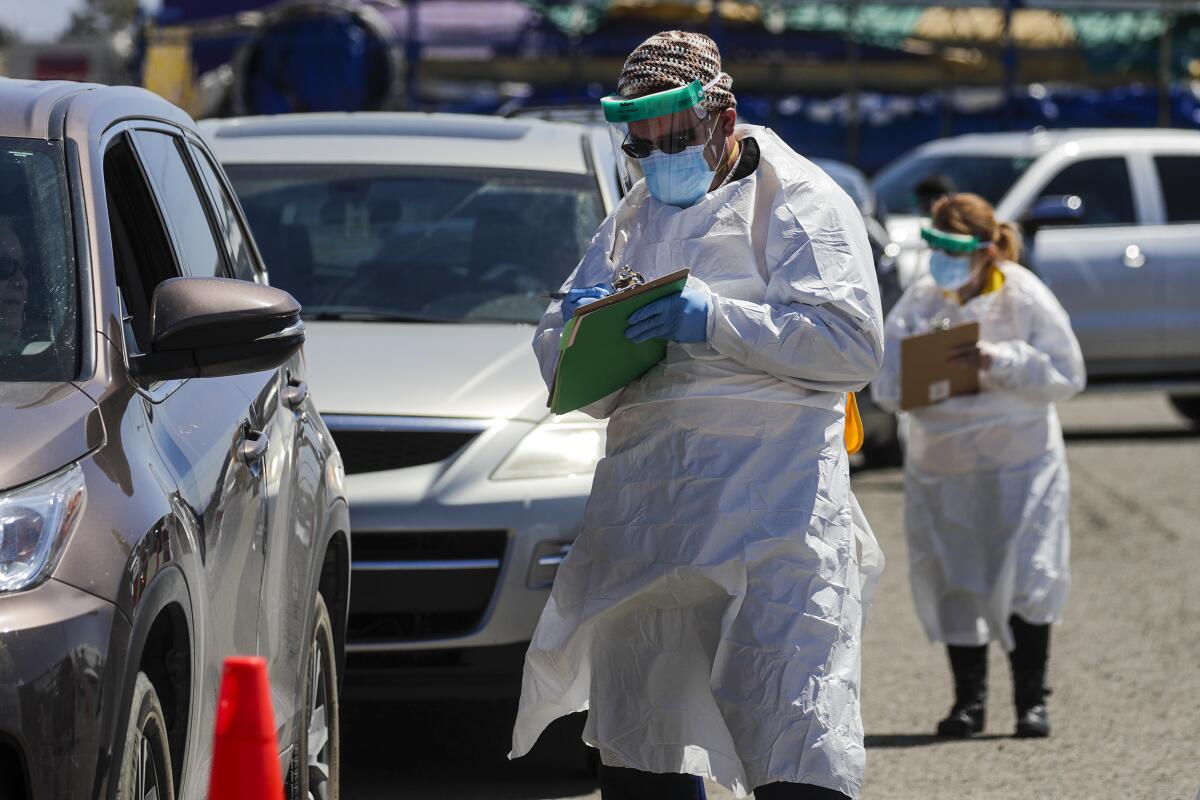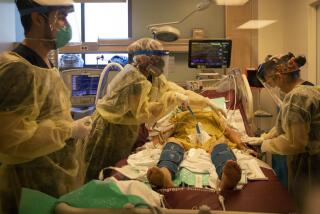Three months that changed the world

- Share via
A timeline follows the course of the coronavirus outbreak and the events that were competing for our attention.
Dec. 31, 2019 — Chinese authorities report a cluster of pneumonia cases in people associated with a seafood and poultry market in Wuhan, in China’s Hubei province. They later identify the culprit: the novel coronavirus, 2019-nCoV.
Jan. 16, 2020 — The U.S. Senate begins its impeachment trial of President Trump. Floor speeches and arguments about calling witnesses would consume the nation’s attention for weeks.
Jan. 21 — Authorities announce the first U.S. confirmed case of the new coronavirus, in Washington state, where a man in his 30s developed symptoms after returning from a trip to Wuhan.
Jan. 26 — Former Lakers star Kobe Bryant is killed along with his 13-year-old daughter, Gianna, and seven others in a helicopter crash in Calabasas.
Jan. 30 — The World Health Organization declares the coronavirus to be an international “public health emergency.” The next day, the Trump administration restricts travel from China.
Feb. 3 — Iowa Democratic caucuses are held, followed by an uproar amid delays caused by the Iowa Democratic Party’s new app-based reporting.
In January, scientists, public health officials and journalists were warning that the coronavirus was set to explode out of China. Few listened.
Feb. 5 — The Senate acquits Trump on both impeachment charges. In a speech the next day, the president holds up a “Trump Acquitted” front page and says: “It’s the only good headline I’ve ever had in the Washington Post.”
Feb. 12 — The coronavirus death toll in China reaches 1,113, and the total number of confirmed cases rises to 44,653. At the time, there were a mere 393 cases outside of China, in 24 countries.
Feb. 14 — A Chinese tourist dies in Paris, marking the first known coronavirus death in Europe. Within two weeks, hundreds of Europeans would be infected, including 800 in Italy.
Feb. 28 — A patient near Seattle becomes the first person in the U.S. known to die of the coronavirus. The Trump administration announces new travel restrictions to South Korea and Italy.
March 4 — A 75-year-old man in Placer County becomes the first Californian known to die of the coronavirus after returning from a tour to Mexico on the Grand Princess cruise ship.
March 12 — Trump suspends travel from Europe; the NBA suspends its season; Gov. Gavin Newsom issues a directive banning large gatherings; L.A County announces its first coronavirus-related death; the WHO labels the outbreak a “pandemic.”
March 13 — Trump declares a national emergency. Three days later, seven counties in the San Francisco Bay Area issue stay-at-home orders, the nation’s strongest restrictions up to that point to stem the spread of the coronavirus.
March 26 — The United States surpasses all other countries in reported coronavirus cases, with at least 82,400 confirmed infections and more than 1,100 deaths.
More to Read
Sign up for Essential California
The most important California stories and recommendations in your inbox every morning.
You may occasionally receive promotional content from the Los Angeles Times.














